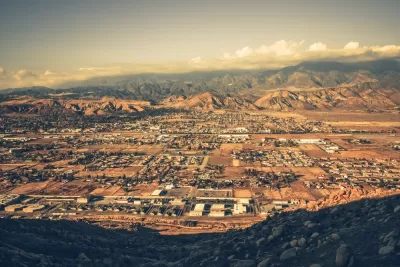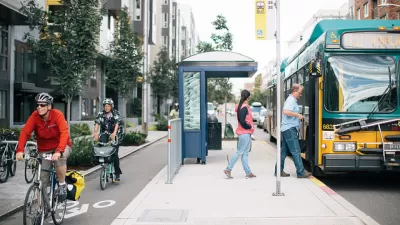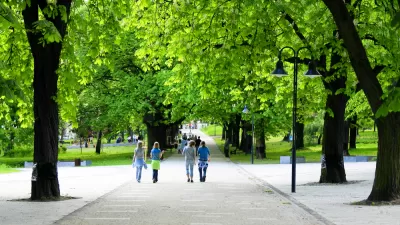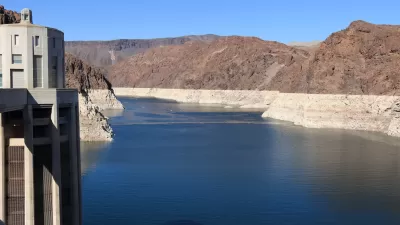No, this is not a trick question. By definition, you'd think the answer is L.A., where the heat is generated, but it's actually San Bernardino, 56 miles to the east. Turns out that like ozone, heat is transported by the wind.

"Heat islands are created by a combination of heat-absorptive surfaces (such as dark pavement and roofing), heat-generating activities (such as engines and generators), and the absence of vegetation (which provides evaporative cooling)," according to the Urban Heat Island Index for California from the California Environmental Protection Agency (CalEPA).
Using the new index which tracks temperatures across the state, CalEPA found that "[t]he highest temperatures crop up east of downtown Los Angeles and are pushed into the inland valley by ocean breezes," writes Sanden Totten, science reporter for KPCC. [Listen here]
"In that way we found that the urban heat island effect in the L.A. area really mimicked the ozone pollution problem in L.A. where it moved east and settles against the hills," said Gina Solomon, Deputy Secretary for Science and Health with CalEPA.
She adds that the index, a result of 2012 legislation (AB 296, Chapter 667, Statutes of 2012), is a way of "quantifying the urban heat island effect." It "is designed so that cities can have a quantifiable goal for heat reduction," according to the webpage.
"We call it not an urban heat island but an urban heat archipelago because it's like a whole chain of urban heat islands that run into each other," Solomon said.
“The Urban Heat Island Index offers state and local governments a tool to help prioritize areas for programs that reduce heat in urban communities, such as urban greening projects and cooler roofs and pavements," notes the press release.
FULL STORY: LA area has highest urban heat island effect in California

Alabama: Trump Terminates Settlements for Black Communities Harmed By Raw Sewage
Trump deemed the landmark civil rights agreement “illegal DEI and environmental justice policy.”

Planetizen Federal Action Tracker
A weekly monitor of how Trump’s orders and actions are impacting planners and planning in America.

How Atlanta Built 7,000 Housing Units in 3 Years
The city’s comprehensive, neighborhood-focused housing strategy focuses on identifying properties and land that can be repurposed for housing and encouraging development in underserved neighborhoods.

In Both Crashes and Crime, Public Transportation is Far Safer than Driving
Contrary to popular assumptions, public transportation has far lower crash and crime rates than automobile travel. For safer communities, improve and encourage transit travel.

Report: Zoning Reforms Should Complement Nashville’s Ambitious Transit Plan
Without reform, restrictive zoning codes will limit the impact of the city’s planned transit expansion and could exclude some of the residents who depend on transit the most.

Judge Orders Release of Frozen IRA, IIJA Funding
The decision is a victory for environmental groups who charged that freezing funds for critical infrastructure and disaster response programs caused “real and irreparable harm” to communities.
Urban Design for Planners 1: Software Tools
This six-course series explores essential urban design concepts using open source software and equips planners with the tools they need to participate fully in the urban design process.
Planning for Universal Design
Learn the tools for implementing Universal Design in planning regulations.
Jessamine County Fiscal Court
Caltrans
Institute for Housing and Urban Development Studies (IHS)
City of Grandview
Harvard GSD Executive Education
Toledo-Lucas County Plan Commissions
Salt Lake City
NYU Wagner Graduate School of Public Service





























